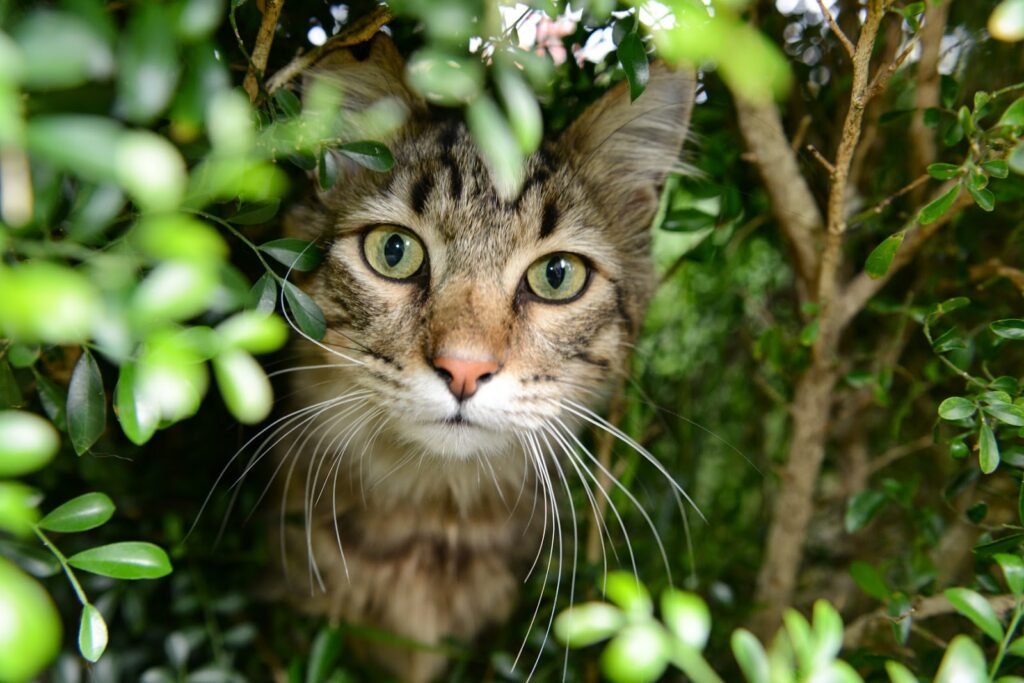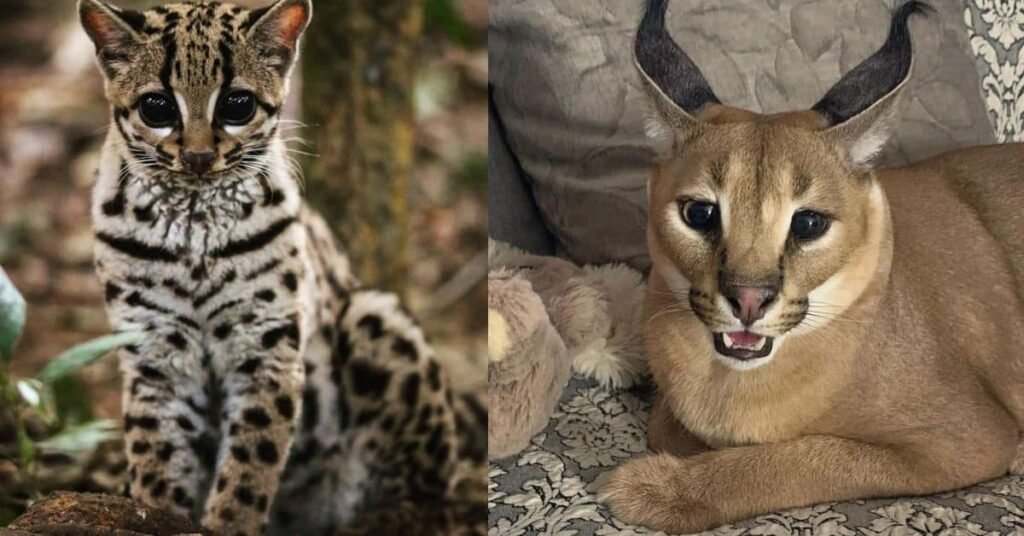Cats, those adorable and enigmatic creatures, have captivated humans for centuries. But have you ever wondered where these furry companions make their homes? From the cozy comfort of living rooms to the wild adventures of the great outdoors, cats have found their own special places to call home. Whether they dwell in bustling cities, rural countryside, or even within the confines of our own hearts, cats have truly carved out a unique space for themselves in our lives. So sit back, relax, and prepare to discover the diverse and delightful world of feline habitats.
Domestic Cats
Indoors
Indoor living has become the most common lifestyle for domestic cats. When you choose to keep your feline friend indoors, it provides them with a predictable and safe environment. Inside your home, your cat can enjoy the comforts of living, including a cozy bed, toys for entertainment, and regular meals. Furthermore, by keeping your cat indoors, you protect them from a variety of potential dangers, such as traffic accidents, exposure to diseases, and encounters with aggressive animals.
Outdoors
While some domestic cats prefer the comforts of indoor living, others enjoy exploring the great outdoors. Outdoor cats have the opportunity to experience the joy of nature, exercise their natural instincts, and enjoy the freedom of movement. However, it is important to mention that allowing your cat to roam outside comes with certain risks. Outdoor cats are more likely to encounter fights, become injured, or fall prey to predators. Additionally, they may engage in activities that harm local wildlife populations. To ensure the safety of your outdoor cat, consider providing a secure and enclosed outdoor space or supervising their outdoor excursions.
Wild Cats
Africa
Africa is home to a diverse range of wild cat species, including the majestic lion, the agile cheetah, and the elusive leopard. These large and powerful cats have adapted to various habitats found on the continent, from the vast grasslands of the Serengeti to the dense forests of Central Africa. They navigate their environments with remarkable grace and possess unique hunting techniques that ensure their survival in the African wilderness.
Asia
Asia boasts an impressive array of wild cat species, each adapting to its distinct environment. The enigmatic snow leopard thrives in the rugged mountain ranges of the Himalayas, while the endangered Amur leopard roams the temperate forests of far eastern Russia and northeast China. Other notable Asian wild cats include the Bengal tiger, Indian leopard, and clouded leopard, each exhibiting their own remarkable characteristics and beauty.
Americas
The Americas are home to several captivating wild cat species, including the iconic jaguar, the agile cougar, and the opportunistic ocelot. From the dense jungles of the Amazon to the expansive grasslands of the American Midwest, wild cats have managed to establish their presence in diverse habitats across North, Central, and South America.
Europe
Europe’s wild cat species may not be as well-known as those in other continents, but they are no less fascinating. The elusive Eurasian lynx, with its distinctive tufted ears, calls the forests of Europe home. These solitary and stealthy hunters are well-suited to the woodlands they inhabit, utilizing their keen senses and exceptional agility to capture their prey.
Australia
Australia, known for its unique wildlife, is the habitat of the wild cat known as the feral cat. Originally introduced to the continent by European settlers, feral cats have thrived in the diverse Australian landscapes. With their adaptable nature, these cats have become a significant threat to Australia’s native fauna, including small mammals, birds, and reptiles.


This image is property of mytypesofcats.com.
Natural Habitats
Forests
Forests provide an abundance of resources and cover for a variety of cat species. From lush rainforests to temperate woodlands, cats have found ingenious ways to navigate these habitats to ensure their survival. The dense vegetation provides ample hiding places, while the trees offer vantage points for hunting and observing potential prey.
Grasslands
Grasslands, characterized by extensive open spaces and varying vegetation, host an assortment of cat species. The wide expanse allows for open hunting grounds, and the grasses themselves conceal predators, allowing them to approach prey undetected. African savannahs and American prairies are just a few examples of grassland habitats that cats have adapted to.
Deserts
The harsh and arid environments of deserts are home to remarkably resilient cat species. These cats have evolved to conserve water and withstand the extreme temperatures of these regions. The sand- and rock-colored coats of desert cats provide camouflage, enabling them to blend seamlessly into their surroundings.
Mountains
Mountainous regions offer a unique set of challenges for cats due to the rugged terrain and fluctuating weather conditions. High-altitude species like the snow leopard and the mountain lion have developed specialized adaptations that allow them to traverse steep slopes, withstand freezing temperatures, and navigate rocky cliffs with ease.
Urban Areas
Cities
Urban areas, with their bustling streets and towering structures, have seen an increase in the number of cats calling them home. Cats residing in cities often adapt by taking advantage of the various nooks and crannies provided by buildings, seeking shelter in abandoned structures or finding comfort on high-rise balconies. These resourceful creatures have successfully integrated into the urban landscape, forging their own unique niche.
Suburbs
Suburban areas offer a balance between urban and natural environments, making them attractive to both humans and cats alike. With residential areas often surrounded by parks or gardens, suburban cats can enjoy the freedom of outdoor exploration while still having access to the safety of human dwellings. Suburbs also tend to have quieter streets, reducing the risk of traffic-related accidents.


This image is property of image.petmd.com.
Human Dwellings
Houses
Houses offer a cozy and secure space for cats, providing them with shelter, warmth, and a sense of belonging. Cats living in houses often have designated sleeping areas, access to windows for bird-watching, and plenty of hiding spots for their natural instincts. The familiar surroundings and regular routines within a house help create a stable and comforting environment for these domesticated companions.
Apartments
Apartments present a unique living situation for cats due to limited space and lack of outdoor access. However, with proper stimulation and attention, cats can thrive in apartment settings. Vertical spaces, such as cat trees or shelves, provide opportunities for climbing and surveying their surroundings. Interactive toys and regular playtime offer mental and physical stimulation, helping apartment cats lead fulfilling lives within the constraints of their environment.
Shelters and Rescue Centers
Shelters and rescue centers play a vital role in providing temporary or permanent refuge for cats in need. These establishments offer a safe and caring environment for cats who have been abandoned, lost, or abused. Staff members work tirelessly to ensure the well-being of these felines, providing them with healthcare, socialization, and an opportunity to find loving forever homes.


This image is property of image.petmd.com.
Feline Colonies
Feline colonies, often found in urban or suburban areas, are comprised of groups of cats who live and interact with one another. These colonies can form naturally or may be managed by dedicated individuals or organizations. By providing food, water, and regular veterinary care, these caregivers ensure the health and stability of the colony. Feline colonies allow cats to live in social groups, fostering a sense of camaraderie and support within their feline community.
Feral Cats
Feral cats are domesticated cats that have reverted to a wild state or were born and raised in the wild. Unlike stray cats, feral cats typically do not readily interact with humans and prefer to remain independent. They have adapted to various habitats and rely on their instincts to hunt, find shelter, and survive in the wild. While feral cats may lead challenging lives, organizations focused on trap-neuter-return (TNR) programs work to control their population and improve their overall well-being.


This image is property of 1.bp.blogspot.com.
Different Climates
Tropical
In tropical regions, cats face high temperatures, humidity, and rich biodiversity. These climates offer a wide range of prey species for cats to hunt, from small rodents and reptiles to birds and insects. Cats in tropical areas have adapted to the abundant vegetation and often display a lighter coat color to help them blend into the lush surroundings.
Temperate
Temperate climates, characterized by changing seasons, are common in many parts of the world. Cats in temperate areas must adapt to the fluctuations in temperature and the availability of food throughout the year. They may grow thicker coats during the colder months or modify their hunting techniques to capture prey that is more readily available during specific seasons.
Arctic
The Arctic is a harsh environment characterized by freezing temperatures and limited vegetation. The Arctic cat species, such as the Arctic fox and the polar bear, have evolved specific adaptations to survive in these extreme conditions. While cats themselves are not native to the Arctic, they still face immense challenges in such cold climates, leading them to develop thick insulating fur and skills for hunting in the snow.
Adapting to Environments
Cats have proven themselves to be incredibly adaptable creatures. From the cozy confines of a house to the vast expanse of a grassland, they have found ways to thrive in a multitude of environments. Whether it be domestic cats who have become cherished companions or their wild counterparts who continue to roam the untamed wilderness, these feline beings have demonstrated their ability to adapt and make the most of their surroundings. As we learn more about their unique qualities and needs, we can continue to provide them with the care and respect they deserve, ensuring their well-being in any environment they call home.


This image is property of www.learnaboutnature.com.

